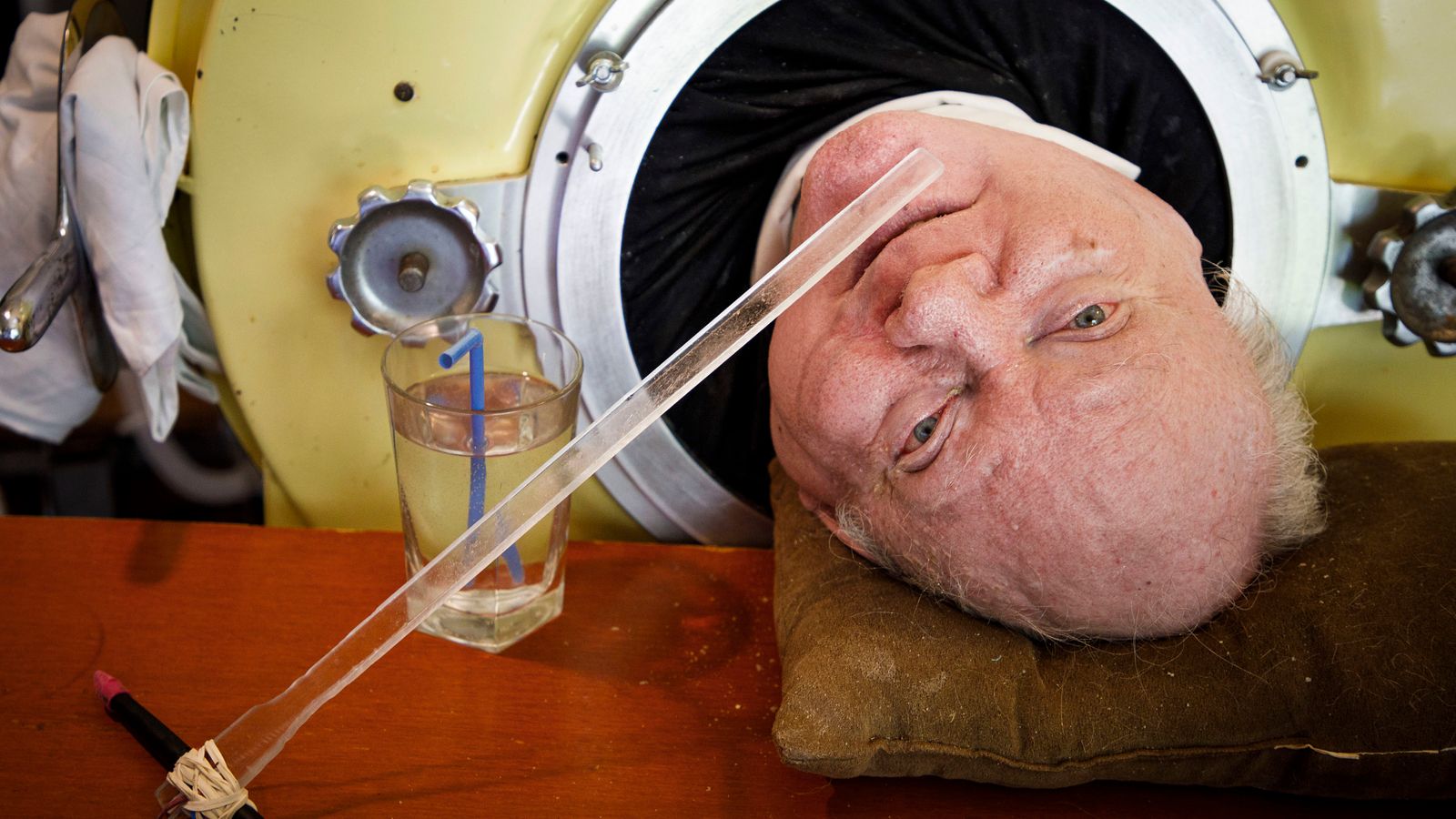The recent passing of Paul Alexander, a man who spent over 70 years living inside an iron lung due to polio, sparked a global conversation about this once-dreaded disease and the remarkable resilience of the human spirit. This article delves into Paul’s story, exploring the history of polio, the function of iron lungs, and the ongoing battle against vaccine-preventable illnesses.
Paul Alexander: A Life Confined, Yet Remarkable
Paul Alexander contracted polio at the young age of six in 1952. This highly infectious disease, caused by the poliovirus, attacks the nervous system, leading to muscle weakness and paralysis. In Paul’s case, the virus severely weakened his diaphragm, the muscle responsible for breathing. This rendered him unable to breathe independently, necessitating the use of an iron lung.
The iron lung, a now-archaic medical device, is a large, coffin-shaped machine that encases most of the body except for the head. By creating a rhythmic change in air pressure within the chamber, the iron lung assists with breathing, allowing individuals with weakened respiratory muscles to function. Paul spent the next seven decades of his life within this metal chamber, demonstrating extraordinary determination and a zest for life despite his physical limitations.
Battling Polio: A Disease of the Past, But Not Forgotten
Polio was once a crippling and potentially deadly disease. Prior to the development of the polio vaccine in the 1950s, outbreaks would paralyze and kill thousands of children worldwide. Symptoms of polio can range from mild fever and sore throat to muscle weakness, paralysis, and even death. The virus spreads through contact with infected individuals, highlighting the importance of proper sanitation and, most importantly, vaccination.
The Iron Lung: A Symbol of a Bygone Era
The invention of the iron lung in the 1920s offered a lifeline to those suffering from respiratory illnesses like polio. However, it is a cumbersome and high-maintenance machine. With the development of effective polio vaccines and advancements in respiratory support technology, the use of iron lungs has become extremely rare. Sadly, Paul Alexander was one of the last remaining individuals reliant on this technology.
A Life Beyond the Iron Lung: Paul Alexander’s Legacy
Despite his physical limitations, Paul Alexander led a full and inspiring life. He obtained a law degree, passed the bar exam, and even authored a memoir titled “Three Minutes in the Dog’s Life.” He utilized technology to connect with the world, becoming a social media personality on platforms like TikTok, raising awareness about polio and his experiences.
The Enduring Importance of Vaccination
The story of Paul Alexander is a stark reminder of the devastating effects of polio. While the disease is largely under control in developed countries thanks to widespread vaccination, outbreaks continue in some parts of the world. The recent death of a young girl from polio in the United States, a country with high vaccination rates, serves as a chilling reminder of the importance of maintaining high vaccination coverage.
Vaccines like the polio vaccine and the measles vaccine work by exposing the body to a weakened or inactive form of the virus, stimulating the immune system to develop antibodies. These antibodies then provide protection against future exposure to the actual disease.
Conclusion: A Story of Survival, Strength, and the Power of Science
Paul Alexander’s life story is a testament to human resilience, the power of science, and the importance of vaccination. While the iron lung may become a relic of medical history, the legacy of polio serves as a stark reminder of the devastating impact of vaccine-preventable diseases. By ensuring high vaccination rates, we can work towards a world free of polio and other preventable illnesses.
Additional Information:
- The DTP (diphtheria, tetanus, and pertussis) vaccine also provides protection against polio.
- For more information on polio and the polio vaccine, you can visit the websites of the World Health Organization (WHO) and the Centers for Disease Control and Prevention (CDC).
- If you have any questions or concerns about vaccinations, please consult your doctor.
